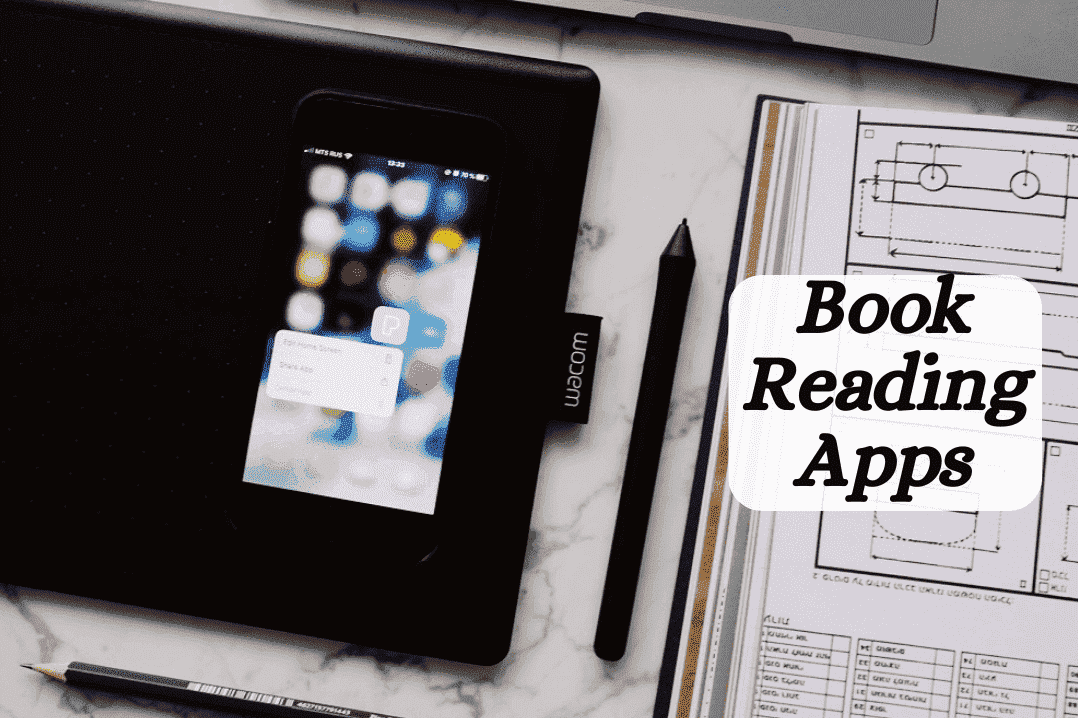When it comes to studying, many students find themselves overwhelmed by the massive amount of information contained within their textbooks. They often struggle with how to effectively read and retain the information presented to them. In this blog post, we will explore the best way to read a textbook and provide a guide to optimal learning.
Have you ever wished you could read a textbook more effectively, absorb information faster, and remember it longer? The SQ4R method is here to transform your reading experience by emphasizing that what you do before and after reading is just as crucial as the reading itself. Learning is not a passive endeavor; it demands focus and engagement. By embracing the SQ4R strategy, you can significantly enhance your comprehension and retention of information.
SQ4R stands for:
- Survey: Quick overview of headings, subheadings, and visuals.
- Question: Formulate questions to guide your reading.
- Read: Actively read, take notes, highlight, and annotate.
- Recite: Explain what you have learned in your own words.
- Record: Summarize key points in notes or an outline.
- Review: Periodically revisit notes to reinforce understanding.
Survey
- Begin with a Quick Overview
Before delving into the chapter, allocate a few minutes to get a sense of its content. Start by reading the chapter's title and the introductory paragraph. Pay close attention to the title, as it often hints at the chapter's subject matter. The introduction can provide crucial background information and offer insights into the author's intentions for the chapter, including the method of development they plan to use.
- Explore Headings, Subheadings, and Emphasized Text
Next, systematically review the chapter's structure by examining the headings, subheadings, and any italicized words or phrases. This approach allows you to create a mental roadmap of the chapter's key topics. As you go through the chapter, take note of these headings and subheadings, as they form a topical outline that will guide your understanding of the content.
- Summarize or Identify Key Points
If the chapter includes a summary section at the end, read it carefully. This summary often highlights the author's main ideas and may emphasize specific concepts or conclusions. In the absence of a summary, you can read the last sentence or two before each new heading. These sentences can serve as signposts, providing insights into what to expect in that section of the chapter.
Before Reading
- Utilize the chapter survey to tap into what you already know about the subject. This process involves recalling your existing knowledge to anticipate the chapter's main points.
- As you conduct your initial survey of the chapter, make predictions about the thought patterns it may follow. Consider how the author might organize and present the information.
- During your pre-reading survey, assess which portions or sections of the chapter might be particularly challenging or difficult to grasp. Identifying potential hurdles in advance can help you prepare mentally for tackling them.
While Reading
- As you read, refer back to your pre-reading survey. It serves as a guide, helping you recognize the key points and main concepts that are important to grasp.
- Highlight, mark, or underline essential information mentioned in your survey. This visual cue will make it easier to revisit crucial details later for review and reference.
- After Reading:
- After completing the chapter, use your pre-reading survey to assess how effectively you have comprehended the material. Reflect on whether your predictions matched the content you encountered.
- Challenge yourself to recall the key information from the chapter. Try to summarize the main points and concepts in your own words. This reinforces your understanding.
- If there are parts of the chapter you could not recall, make it a priority to review them immediately. This targeted review ensures that you do not leave gaps in your comprehension.
Question
One of the most effective techniques for active and engaged reading is to formulate questions that serve as your guiding compass throughout the reading process. Here is how to make the most of this strategy:
- Set a Purpose for Reading
Before you start reading, establish a clear purpose. What do you want to learn or achieve from this reading? This purpose will shape the questions you formulate.
- Create Engaging Questions
Craft questions that pique your curiosity and align with your reading purpose. These questions should be specific, thought-provoking, and focused on the key aspects of the material.
Types of Questions
Consider several types of questions, such as factual, analytical, and interpretive questions. Factual questions seek specific information, while analytical questions encourage critical thinking and understanding. Interpretive questions delve into the broader context and implications.
- Use Questions as Signposts
As you read, your questions act as signposts, guiding your attention and focus. Whenever you encounter information related to your questions, you will be more alert and attentive.
- Adjust and Refine
Be flexible with your questions. It is okay to modify or add new questions as you progress through the reading and gain a deeper understanding of the content.
- Pause and Reflect
Periodically pause your reading to answer your formulated questions. This keeps you actively engaged and ensures you are absorbing the material effectively.
Summarize with Questions
When you finish reading a section or chapter, use your questions to summarize the key takeaways. This reinforces your understanding and retention.
- Seek Answers and Clarification
If your questions remain unanswered or if you encounter confusion, do not hesitate to seek answers from additional sources or consult with peers or instructors.
By formulating and using questions as a proactive reading strategy, you transform your reading into an active and purposeful learning experience. Questions not only keep you engaged but also deepen your comprehension and critical thinking skills, making your reading sessions more productive and rewarding.
Read
Actively reading a text goes beyond simply scanning words on a page. It is an approach that requires engagement and interaction with the material. Here is how to actively read, including taking notes, highlighting, and annotating:
- Taking Notes
While reading, jot down key points, important concepts, and any information that stands out. Your notes can take various forms, such as brief summaries, lists, or diagrams. Focus on capturing the most relevant and significant information. Avoid copying large chunks of text verbatim; instead, rephrase the content in your own words to enhance understanding.
- Highlighting
Use a highlighting tool (physical or digital) to mark essential phrases, sentences, or passages in the text. Highlighting helps you quickly identify crucial information when you revisit the material. Be selective when highlighting. Only highlight what is related to your reading purpose or the questions you have formulated.
- Annotating
In the margins or using digital annotation features, add brief comments, questions, or reflections. Annotations provide context and help you connect ideas. Annotate to clarify your understanding, make connections to prior knowledge, or challenge the author's arguments with your own thoughts.
- Active Engagement
Actively engage with the material by asking questions as you read. If something is unclear or intriguing, do not pass it by; instead, write down your questions or thoughts. Summarize sections of the text in your own words after reading them. This practice reinforces your comprehension.
- Stay Organized
Keep your notes, highlights, and annotations organized. Use headings, subheadings, or symbols to categorize and easily locate diverse types of information.
- Review and Revisit
After you have finished reading the entire text, review your notes, highlights, and annotations. This step aids in the consolidation and reinforcement of what you have learned.
Actively reading with note-taking, highlighting, and annotating helps you digest and retain information effectively. It transforms reading into an interactive process where you are an active participant, not just a passive observer. This engagement enhances comprehension, critical thinking, and the long-term retention of the material.
Recite
Reciting is a critical step in the SQ4R method, where you actively engage with the material by articulating what you have learned. Here is how to effectively recite and why it is essential:
- Summarize Key Points
Upon reading a section or chapter, you can create a synopsis of the main points and key concepts. Avoid simply repeating the author's words; instead, rephrase the information to demonstrate your understanding.
- Use Your Own Language
Explain the material using language and terminology that make sense to you. This process not only reinforces your comprehension but also helps you internalize the information.
- Teach It to Someone Else
If possible, share what you have learned with someone else, such as a friend, family member, or study partner. Teaching the material to someone else forces you to clarify your understanding and identify any gaps in your knowledge.
- Create Mental Images
Visualize the concepts you have learned. Try to create mental images or diagrams that represent the information. These visual aids can enhance your recall and make complex ideas more accessible.
- Self-Questioning
Pose questions to yourself about the material. Then, answer these questions as if you were explaining the content to someone else. This self-questioning and answering process reinforces your memory and comprehension.
- Make Connections
Connect the new information to your existing knowledge. Explain how the material relates to what you already know. This integration of knowledge enhances understanding and retention.
- Focus on Key Ideas
Emphasize the most critical and relevant ideas in your recitation. Avoid getting bogged down in minor details. Concentrate on the main takeaways.
- Regular Practice
Make recitation a regular practice in your study routine. It is an active form of learning that enhances long-term retention of information.
Reciting information in your own words is a powerful learning strategy. It forces you to process the material on a deeper level, transform it into your mental framework, and ensure that you have truly grasped the content. It is an effective way to consolidate your understanding and boost your memory retention, making it an indispensable part of the SQ4R method.
Record
The "Record" step in the SQ4R method is about distilling and organizing the essential information you have gathered from your reading. This helps you create a condensed version of the material that is easier to review and study. Here is how to effectively record key points:
- Structured Notes
Create a structured note-taking system that works for you. This can be traditional linear notes, mind maps, digital notes, or an outline format. The goal is to organize the information logically.
- Focus on Key Ideas
While recording, prioritize the most significant and relevant ideas from the text. Avoid including every detail; instead, aim to capture the main concepts and supporting evidence.
- Use Your Own Words
Write the summary in your own words. This not only reinforces your understanding but also ensures that you are not simply copying the author's language.
- Highlight and Format
Use formatting techniques like bullet points, numbering, or headings to emphasize the structure of your summary. Highlight key phrases or terms to make them stand out.
- Be Concise
Keep your summary concise and to the point. Aim for brevity while retaining the essence of the information. Avoid unnecessary repetition.
- Organize by Topic
If the material covers diverse topics or subtopics, organize your summary accordingly. This helps you quickly locate specific information when reviewing.
- Include Examples and Illustrations
If applicable, include examples, illustrations, or case studies in your summary to reinforce your understanding of key concepts.
- Link to Your Questions
Connect your summary to the questions you formulated before reading. Ensure that your notes address the questions you sought to answer.
- Maintain Consistency
Maintain a consistent note-taking style throughout your study sessions. This makes it easier to review and compare information from different readings.
- Review and Revise
Periodically revisit and revise your summaries as you progress through the material. Updating your notes ensures that they remain accurate and reflect your evolving understanding.
Recording key points in notes or an outline is an integral part of the learning process. It allows you to condense and organize information, making it more accessible for future reference and review. Additionally, summarizing the material in your own words enhances comprehension and retention, making it easier to recall the material when needed.
Review
In the SQ4R method, the "Review" step is a crucial part of the learning process. Regularly revisiting your notes and summaries helps solidify your comprehension and improve your long-term retention of the material. Here is how to effectively implement the review step:
- Set a Review Schedule
Establish a schedule for reviewing your notes. This can vary depending on the volume of material and you are learning pace. Reviewing notes weekly or before exams is a common practice.
- Active Engagement
Do not passively reread your notes; actively engage with them. As you revisit your notes, ask yourself questions about the content, try to recall key points, and explain concepts in your own words.
- Highlight Key Information
During the review, pay particular attention to the information you highlighted or emphasized in your notes. These are likely the most critical details.
- Make Connections
Connect the current material to what you have previously learned. How does this latest information relate to existing knowledge? Making these connections strengthens your understanding.
- Summarize and Condense
While reviewing, consider creating even more concise summaries of your notes. Condensing the material further can help you focus on core concepts.
- Test Yourself
Challenge yourself with practice questions or quizzes related to the material. This not only assesses your understanding but also reinforces your memory.
- Identify Gaps
If you come across areas where your understanding is still fuzzy, make note of them. This identifies the topics or concepts that may require additional review or clarification.
- Use Various Formats
Experiment with different review formats, such as flashcards, mind maps, or concept maps. Some learners find these formats more effective for reinforcing understanding.
- Seek Clarification
If you encounter persistent confusion during your review, do not hesitate to seek clarification from your instructor, classmates, or additional resources.
- Maintain Consistency
Consistency in your review process is key. Stick to your review schedule and stay committed to revisiting your notes regularly throughout your study period.
The "Review" step is essential for the long-term retention of knowledge. It ensures that the information you have learned remains fresh in your memory and ready for application in future learning or assessments. By actively engaging with your notes and summaries, you will not only reinforce your understanding but also build a strong foundation for continued learning and academic success.
Final Words
To read a textbook effectively, follow a systematic approach. Begin with a survey to understand the structure and main ideas. Formulate questions to stay engaged. Actively read, take notes, and highlight key points. Explain what you have learned in your own words during recitation. Summarize key points in organized notes or an outline. Periodically revisit your notes for review. This methodical process improves comprehension and boosts material retention, making textbook reading a more productive and rewarding learning experience.
Are you a cash-strapped student looking for affordable solutions for your education expenses? Look no further! Our website is your one-stop destination for all your textbook needs. Whether you're searching for cheap college textbooks or want to sell used textbooks to make some extra cash, we've got you covered. We offer an extensive selection of used textbooks for purchase, making it easy for you to find the resources you need. And if you're looking for a temporary solution, our online book rental service allows you to rent textbooks for a semester or as needed, helping you save even more. So, when you're wondering where to buy used textbooks or how to make some money by selling your used textbooks, turn to us for a hassle-free and budget-friendly experience.
References
- Ciborowski, J. Using textbooks with students who cannot read them. Remedial and Special Education, 16(2), 90-101.
- Ryan, T. E. (2006). Motivating novice students to read their textbooks. Journal of Instructional psychology, 33(2).
- How to Read a Book https://en.wikipedia.org/wiki/
FAQs
Why is the systematic approach to reading a textbook important?
A systematic approach helps you stay organized and engaged while reading, enhancing comprehension and retention of the material. It ensures that you make the most out of your study time.
What is the purpose of formulating questions before reading?
Formulating questions before reading helps you set a purpose and actively seek answers as you progress. It keeps you focused and engaged, promoting a deeper understanding of the content.
How does recitation help with understanding the material?
Recitation forces you to process and explain the information in your own words. This reinforces your memory and comprehension by demonstrating your grasp of the material.
Why is it beneficial to summarize key points after reading?
Summarizing key points helps condense and organize the information for easy reference. It provides a quick overview of the material, aiding in comprehension and retention.
Why should I review my notes periodically?
Regular review keeps the material fresh in your memory, helps you make connections between concepts, and identifies areas that require further attention. It is essential for long-term retention and effective learning.
Find More about:
Most Popular Economics Textbooks









